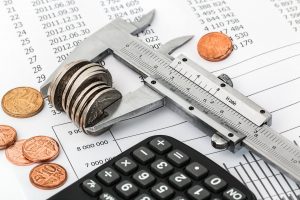How does the VAT deduction work?
The VAT deduction is one of the most common headaches for entrepreneurs and freelancers . Every three months, the VAT that we have collected through our sales of products or services must be presented to the Treasury through form 303. If during that period we have had expenses in which we have paid VAT, either for the purchase of products or the acquisition of services, we can subtract it from the total to be paid.
 However, this is not so simple since not all expenses are deductible, so we have to take into account the allowed operations, as well as the VAT percentage that we can deduct in some cases. We are going to see all this little by little with some examples so that you can understand it perfectly once and for all.
However, this is not so simple since not all expenses are deductible, so we have to take into account the allowed operations, as well as the VAT percentage that we can deduct in some cases. We are going to see all this little by little with some examples so that you can understand it perfectly once and for all.
Definitions of the different terms referring to VAT
To better understand what we are going to explain next, it is essential that you first know the technical terms that are normally used in this area. Don’t worry because you will understand it easily. These are the three “VAT rates” that we want you to know before explaining how the VAT deduction works:
- Output VAT : every time a freelancer or company sells their products or services, they include the corresponding VAT on their invoice (with exceptions). Every quarter we must pay all this VAT, denominated as passed on.
- Supported VAT : it is the VAT you pay for the purchase of material or the acquisition of services. However, not all input VAT is directly deductible, as there is a clear regulation of what can and cannot be deducted.
- Deductible VAT : it is the VAT that we can deduct from the total output VAT. This VAT comes from the expenses that you have had and that can be deducted according to the tax regulations.
Therefore, the formula for the VAT to be paid each quarter could be something like:
VAT TO PAY = VAT ACCOUNTED – VAT DEDUCTIBLE
How is the deductible VAT calculated? Well, it is very simple, we just have to add the VAT of the expenses that are related to our professional activity. To do this, we must know what the deductible VAT requirements are.
VAT deductible requirements
 According to current law, all expenses that are directly and exclusively related to professional activity are considered deductible VAT . That is, if you buy a phone that you will use exclusively for work, you can deduct it. However, if the phone is for personal use, you will not be able to deduct it.
According to current law, all expenses that are directly and exclusively related to professional activity are considered deductible VAT . That is, if you buy a phone that you will use exclusively for work, you can deduct it. However, if the phone is for personal use, you will not be able to deduct it.
There are certain categories of products and services that are excluded from the VAT deduction:
- Jewelry, precious stones or the like.
- Food, tobacco and beverages.
- Recreational services or shows.
- Goods or services intended for clients, workers or third parties.
- In addition, all expenses destined for the private sphere are excluded, those that are not part of the official accounting or professional patrimony.
Here you have to make a small note regarding professionals who work from home. In this case, if part of personal expenses is considered deductible VAT but which are produced by business activity. For example, you can deduct up to 30% of the VAT on your supplies, since this expense is produced by the business activity you carry out at home.
